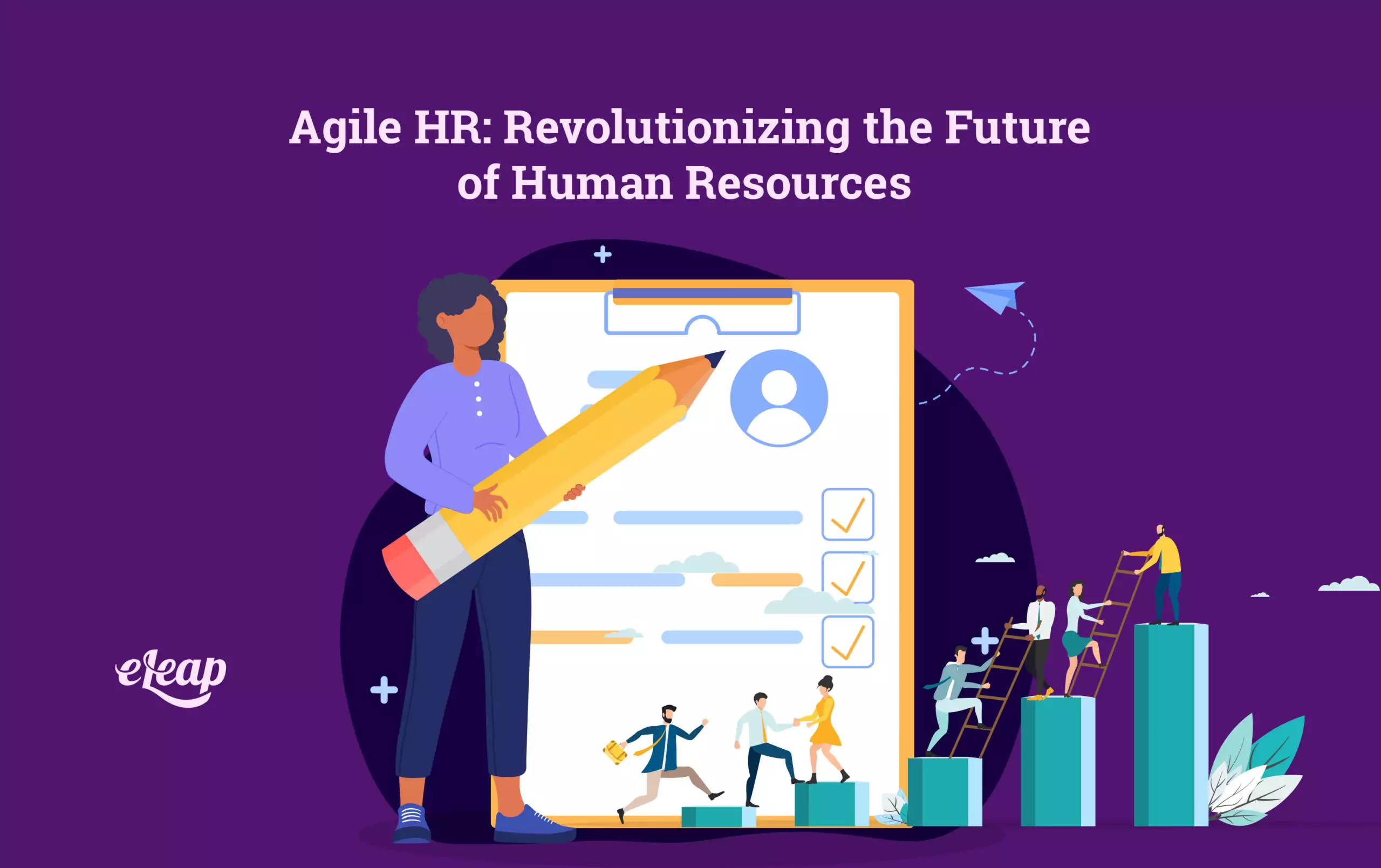Agile HR: Revolutionizing the Future of Human Resources

Agile HR has emerged as a game-changer in human resources management. This dynamic approach combines the principles of Agile methodology with HR practices, enabling organizations to adapt swiftly to changing business landscapes while putting employees at the center of the process. This comprehensive guide delves into Agile HR, exploring its core concepts, benefits, implementation strategies, and FAQs. Whether you’re an HR professional, a business leader, or simply curious about the future of HR, this article is your gateway to understanding the power of Agile HR.
Introduction: Embracing Agile HR for 21st-Century Challenges
In today’s fast-paced business environment, agility isn’t just a buzzword—it’s a necessity. Agile HR, an innovative approach to human resources, seeks to streamline processes, enhance collaboration, and drive continuous improvement. By drawing inspiration from Agile methodologies commonly used in software development, Agile HR introduces a fresh perspective to managing people, projects, and strategies.
Agile HR: Redefining HR Practices for the Modern Era

Agile HR is a paradigm shift that reinvents traditional HR practices. It promotes flexibility, transparency, and adaptability, enabling HR teams to respond proactively to changes and challenges. With Agile HR, HR professionals adopt the role of facilitators, guiding teams through iterative cycles of planning, executing, evaluating, and adjusting.
The Core Principles of Agile HR
Agile HR is built upon a set of principles that guide its implementation:
Customer-Centric Approach: Just as Agile development focuses on customer needs, Agile HR centers around employee needs, ensuring a positive employee experience.
Collaborative Teams: Cross-functional teams collaborate to enhance innovation, communication, and problem-solving.
Iterative Processes: HR tasks are divided into smaller cycles, allowing continuous improvement and adaptability.
Feedback-Driven Improvement: Regular feedback loops enable HR to make data-informed decisions and refine strategies promptly.
Embracing Change: Agile HR welcomes change as a means to evolve and grow rather than as an obstacle.
Benefits of Implementing Agile HR
Agile HR offers a multitude of benefits for both organizations and employees:
Enhanced Employee Engagement: Agile HR boosts engagement and job satisfaction by involving employees in decision-making and valuing their input.
Faster Adaptation: Agile HR enables rapid responses to market changes, ensuring businesses stay competitive.
Continuous Learning: Embracing a learning culture leads to employee upskilling and development opportunities.
Innovation Amplification: Cross-functional collaboration and frequent feedback foster innovation and creative problem-solving.
Improved Communication: Agile HR emphasizes open communication channels, reducing misunderstandings and conflicts.
Implementing Agile HR: Strategies for Success
Transitioning to Agile HR requires a well-planned approach. Here’s a step-by-step guide to implementing Agile HR effectively:
Assessment and Readiness: Evaluate your organization’s current HR practices, identify pain points, and gauge the willingness to adopt Agile methodologies.
Training and Education: Train HR teams and employees on Agile principles, emphasizing collaboration, transparency, and iterative processes.
Pilot Projects: Start with small-scale Agile HR projects to test methodologies, learn from successes and challenges, and make improvements.
Cross-Functional Teams: Form diverse teams comprising HR professionals, managers, and employees to encourage different perspectives.
Clear Goals and Metrics: Define objectives and key performance indicators (KPIs) for Agile HR projects.
Feedback Loops: Establish regular feedback mechanisms to evaluate progress and adjust as needed.
Continuous Improvement: Encourage a culture of continuous improvement, where teams reflect on outcomes and refine strategies.
FAQs About Agile HR
Q: What industries can benefit from Agile HR?
Agile HR applies across industries, from tech to healthcare, as it enhances processes and employee engagement.
Q: Can Agile HR work for remote teams?
Absolutely! Agile HR’s emphasis on collaboration and adaptability makes it well-suited for remote work environments.
Q: How does Agile HR handle performance evaluations?
Agile HR replaces annual reviews with ongoing feedback loops, allowing for timely performance adjustments.
Q: Is Agile HR suitable for small businesses?
Agile HR can be scaled to fit the needs of small businesses, promoting agility and innovation.
Q: What challenges might arise during Agile HR implementation?
A Resistance to change and aligning Agile practices with existing HR processes are common challenges that can be overcome with proper planning and communication.
Q: Are there specific tools for Agile HR management?
While various Agile project management tools can be adapted, the focus should be on the Agile mindset and principles.
Conclusion: Embrace the Future of HR with Agile Practices
Agile HR is not a mere trend—it’s a transformative approach that empowers HR professionals and organizations to thrive in an ever-evolving landscape. By adopting Agile methodologies, fostering collaboration, and prioritizing employee well-being, businesses can enhance their competitiveness, innovation, and overall success. The journey to Agile HR might involve challenges, but the rewards in terms of engagement, adaptability, and growth make it a journey worth embarking on.
Remember, Agile HR is more than a methodology; it’s a mindset that embraces change, values feedback, and propels HR into the future.
SEO Meta Description:
Discover how Agile HR is transforming traditional HR practices. Learn how to implement Agile methodologies, improve employee engagement, and foster innovation. Find expert insights on Agile HR strategies.